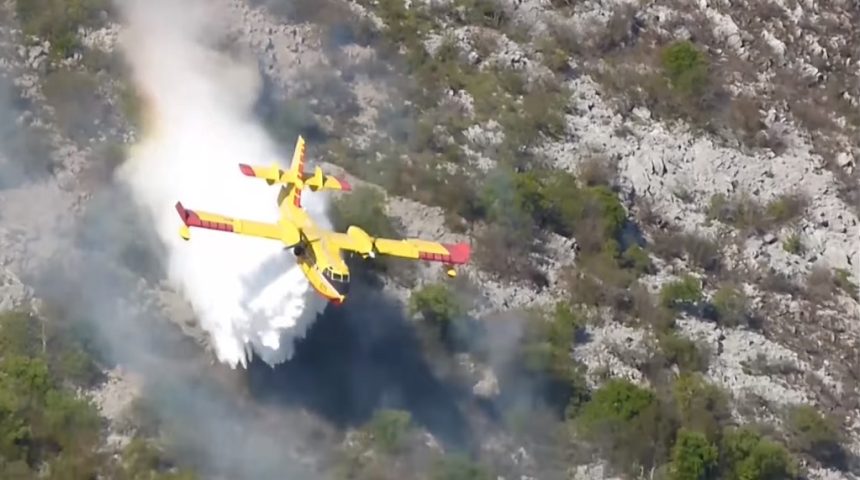The video further highlights how hazardous firefighting missions can be.
Last year, a fire broke out in the open near a railway in Draga (Rijeka), Croatia, and the wind spread it on steep rocky terrain nearby, blocking the access for firefighters on the ground. A Canadair CL-415 “Water Bomber” was quickly dispatched to the scene to help extinguishing of the fire.
The pilots displayed some impressive maneuvering, flying almost at treetop level to drop accurately the Canadair’s 6000 liters of water for maximum effect. Their skills are even more remarkable if we look at how they had to deliver water downhill, arriving from behind the hill and then abruptly diving as they passed over the ridge. You can get an idea of how low they had to fly just by looking at their shadow on the ground.
As our Editor David Cenciotti wrote in a previous article,
The firefighting mission is undoubtedly one of the most hazardous for pilots. The very low altitude, the smoke that reduces visibility, winds causing turbulence, the large concentration of aircraft in the same area, the generally abrupt topography and the need of perform several fill-drop cycles in a short time make the water bomber role particularly risky.
The “Supescoopers”, as the CL-415 are also called, have been supporting firefighting operations across the world for decades and are largely appreciated for their capability of quickly delivering great quantities of water or fire retardant in response to fires. Since the aircraft is amphibian, it can refill its tanks from a nearby water source (lake or sea) in just 12 seconds while running on the water. An improved variant called CL-515 is currently being developed, featuring also an increased capacity up to 7000 liters.









